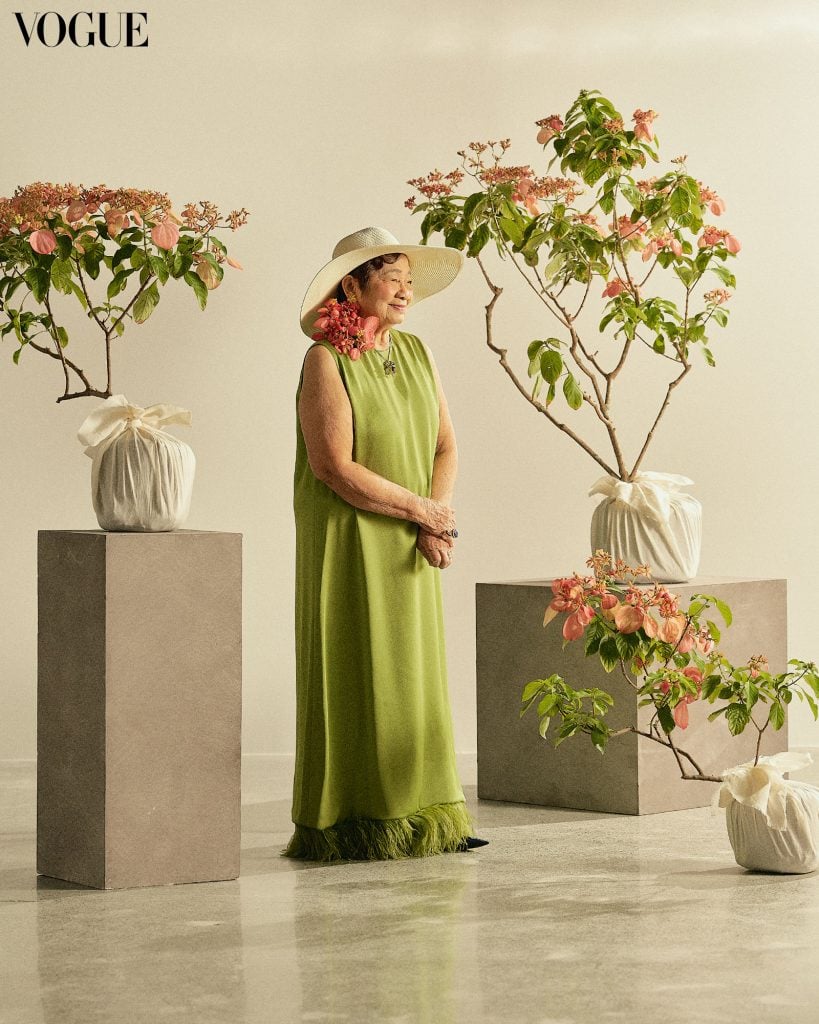By Ria de Borja
Photography By Artu Nepomuceno

The Filipino geneticist has garnered many accolades in her lifetime, including having two flowers named after her.

Ninety-one-year-old National Scientist Dolores Ramirez began teaching at the University of the Philippines in 1956. She explains her ethos as a professor: “The genetic component in one’s aptitude for mathematics is only 12 percent. That means the gene contributes only 12 percent, and 88 percent comes from the environment. You can’t blame your parents if you’re not good at math. The biggest factor is your math teacher. If you know this as a math teacher, you should teach math in a way that your students will learn. How do you do that? You will probably make it simpler and be more encouraging, especially with children.”
As somebody who has advanced the field of plant biochemical genetics and cytogenetics in the Philippines, Ramirez certainly believes in logic and the scientific method. “I’m also a product of somebody else’s mentoring, so I’m sincerely part of the chain. There are many students, such as my students, for example, who have widened the scope of what I’ve done,” she explains. “In genetics, there’s a wide latitude. I specialize in one section, and my students have gone forward and sidewards in expanding the science. My research is invariably communicated to students, which adds to my accomplishments. My students will bring it to the next level. I’ve had several generations who have done that and have continued.”
Ramirez also emphasizes that throughout her life, the generosity of the people around her helped her achieve. She says that she was fortunate to receive government resources to conduct her research and has had “a lot of good breaks and good bosses.”
Genetics is a basic science, she explains, but in its application, you can create something new. In plants, for example, you can produce a new variety that has more yield, is more attractive or beautiful, or is more resistant to stresses, insects and pests. “I do not directly produce those varieties yet, somehow, I indirectly contribute to national development,” she says, adding that she plants seeds, so to speak.
Before being named National Scientist for the Philippines, Ramirez had been the SEARCA (Southeast Asian Regional Center for Graduate Study and Research in Agriculture) Professorial Chair for Genetics, a recipient of the Gregorio Y. Zara award in basic research and the Rizal Pro Patria award for outstanding achievement in science. She also received the UP Professorial Achievement Award in agriculture. But she’s more popularly known for having a gumamela hybrid and a mussaenda hybrid named after her.
“When you work, you have a goal in mind that is sometimes even beyond your own,” she says. “These add to your accomplishments. And your accomplishments contribute to your self-worth and essentially spread goodwill.”
By Ria De Borja. Photographs by Artu Nepomuceno. Beauty Editor: Joyce Oreña. Fashion Director: Pam Quiñones. Makeup: Gery Peñaso of M.A.C Cosmetics, Ting Duque. Hair: JA Feliciano, Mong Amado. Art Director: Jann Pascua. Production Design: Justine Arcega-Bumanlag. Producer: Bianca Zaragoza, Anz Hizon. Multimedia Artists: Gabbi Constantino, Tinkerbell Poblete. Production Assistant: Zofia Agama. Photographer’s Assistants: Choi Narciso, Jordon Estrada. Stylist’s Assistant: Ticia Almazan. Production Design Assistants: Gabrielle Mantala, Geber Cunanan, Jan Abal, Olderico Bondoc. Makeup Assistants: Charisma Contaoi, Leilani Samson, Lorrine Villamayor. Interns: Jean-Jacques Girod-Roux, Sophia Lanawan.
Source: https://vogue.ph/lifestyle/people/dr-dolores-ramirez-continues-to-plant-the-seeds-of-tomorrow/
